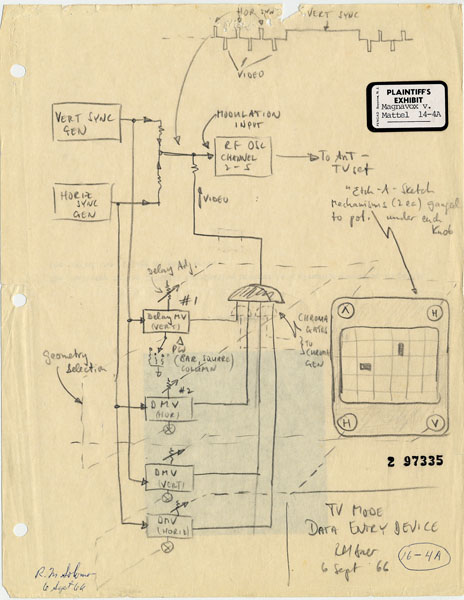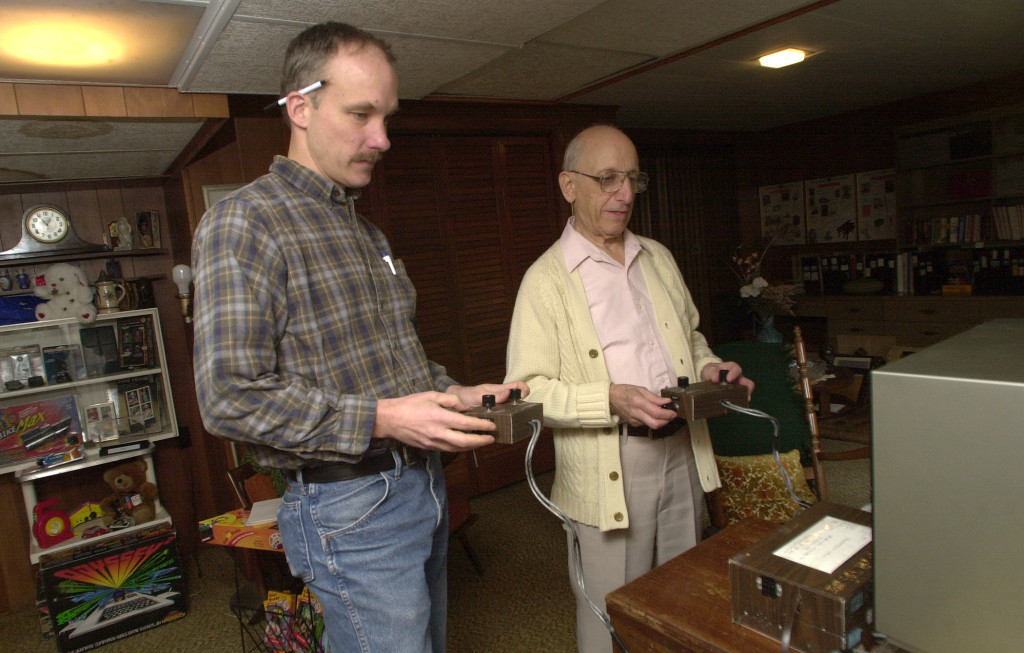March 8, 2022, marks the 100 th anniversary of the birth of Ralph Henry Baer in Pirmasens, Germany. Baer would go on to create seminal electronic devices, toys, and gadgets., including his groundbreaking conceptualization and work in what was to become the modern video game industry, done while he lived in Manchester and led ateam of engineers at Sanders Associates, now part of BAE Systems, in Nashua.
To mark it, you might want to contribute to the Ralph H. and Dena W. Baer Scholarship Fund at give.nhcf.org/BaerScholarship or the Ralph H. Baer Endowment for Invention Education at https://amhistory.si.edu/donate/ralph-baer
Ralph Baer, who had fled fascist Germany and settled in the United States, earned a degree via the GI Bill in television engineering. One day – 1 September 1966 to be exact – while sitting at a bus stop, he brainstormed ways to
make television sets even more useful and entertaining.
He jotted down all the different types of activities that he imagined could be played on a television unit, including table tennis, auto racing and chess along with other activities such as the interactive use of the medium for instruction and the creation of art. After starting independent work on his idea, Baer was given the green light to assemble a team of engineers to bring his vision for the television into focus. For more than three years, Baer and his team, working out of their lab on Canal Street in Nashua, developed technology. The result of that work was that in 1969 Baer’s team officially unveiled the first multiplayer television video game system which they nicknamed “The Brown Box.”
A video of a demonstration by Baer and others can be seen on YouTube: https://www.youtube.com/watch?v=scaLx1l_j5w
The Brown Box – which referred to the woodgrain, self-adhesive vinyl that covered the console – introduced and featured separate controls and a multigame program system, the basic features most video game units still have today. On that first system, one could play table tennis, checkers, four different sports games, target shooting with a light gun, and a golf putting game. The original unit is now part of Lemelson Center’s collection at the Smithsonian’s American History Museum in Washington, DC.
In 1971, Baer filed for the first video game patent which concerned itself with the workings of the Brown Box. It was licensed to the Magnavox Corporation and sold as the “Odyssey” in 1972 – the world’s first video game system.
Baer has been called “The Father of Video Games” for his part in spearheading the system from which the modern videogame industry sprang. Baer also has been recognized as “An Icon of American Innovation” and was inducted into the USPTO’s Inventor Hall of Fame and received the National Medal of Technology from the President of the United States. Ralph also received the Game Developers Choice Award in 2008.
His artifacts, papers and even his basement workshop are on display at the Smithsonian National Museum of American History in Washington, D.C as well as the Strong Museum in Rochester, NY and the Millyard and See Science Museums in Manchester. Manchester has a statue and plaza in the city’s Silicon Millyard honoring Baer. A rededication of the plaza is scheduled for May 21 at 1pm.



 Return to the Concord Monitor
Return to the Concord Monitor